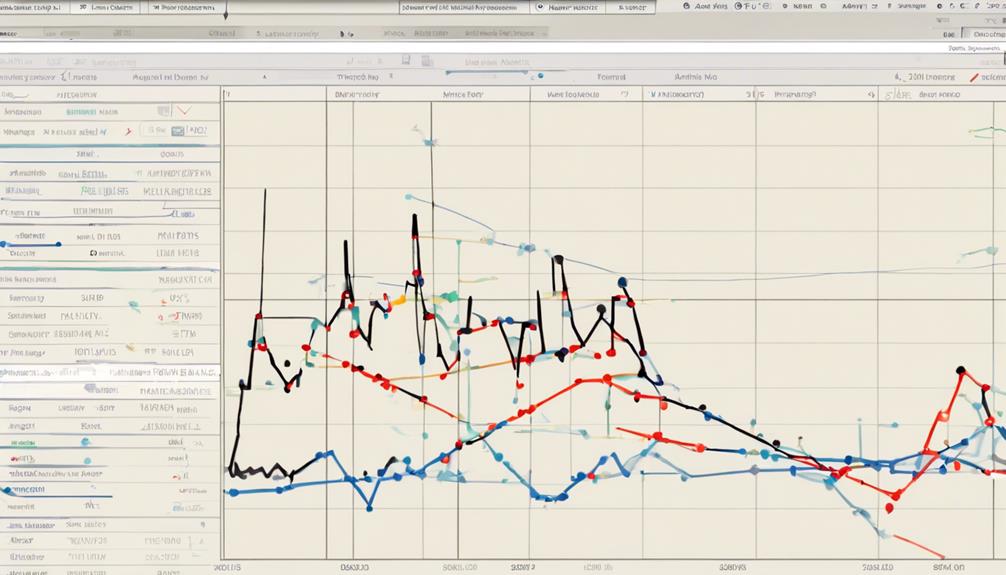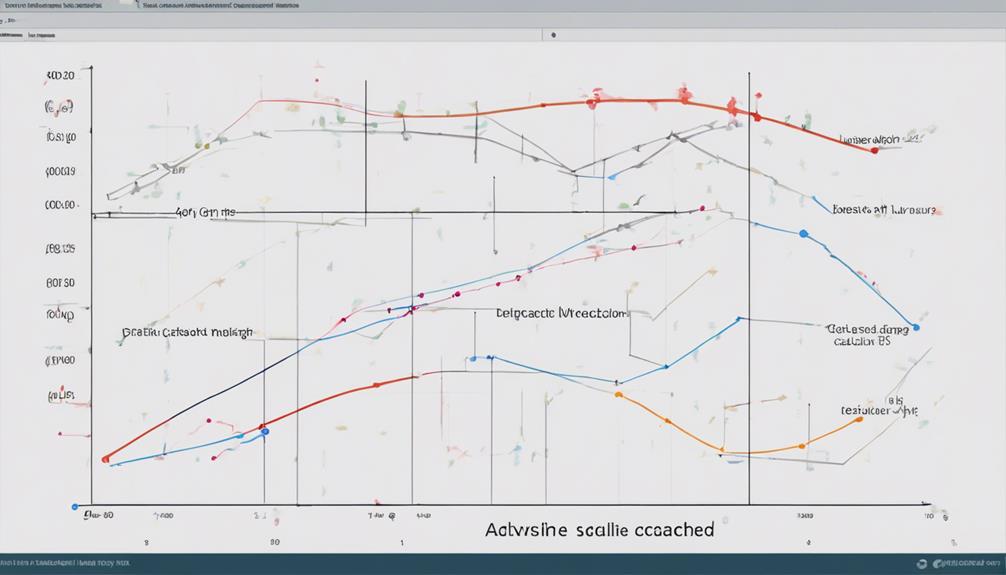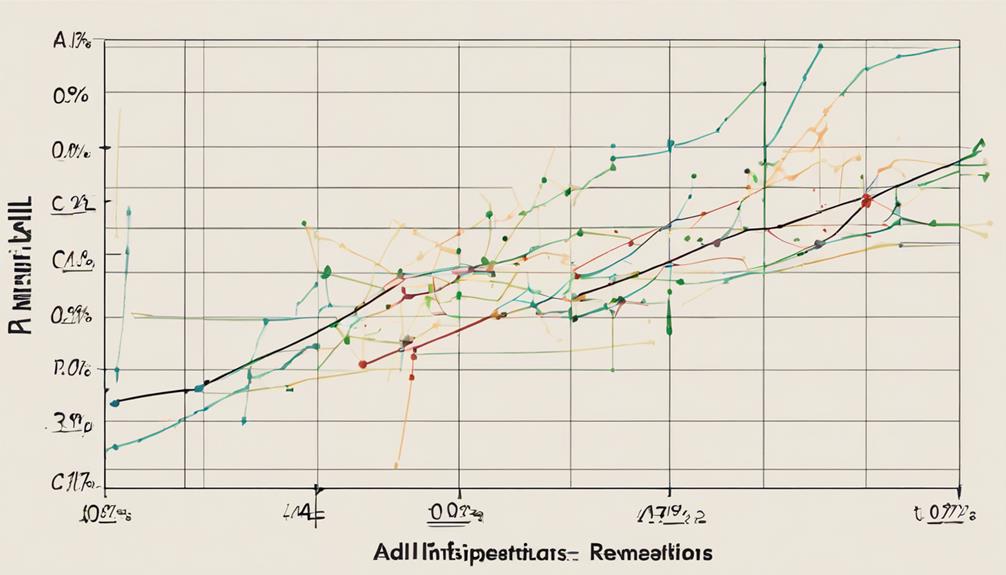Imagine the Advance-Decline Line as a roadmap, guiding you through the twists and turns of market movements.
As you navigate this comprehensive guide, you'll uncover the intricate details of this powerful indicator and its implications for your trading strategies.
Understanding the nuanced relationship between advancing and declining stocks can be a game-changer in your approach to market analysis.
So, are you ready to unlock the secrets behind the Advanced Decline Line and elevate your trading acumen to new heights?
Understanding the Advance Decline Line
To comprehend the intricacies of the Advance Decline Line (A/D Line), you must grasp its fundamental function in tracking the daily difference between advancing and declining stocks. This technical index plays a crucial role in market analysis by providing insight into the overall health of the market and the sentiment of investors.
By monitoring the number of advancing and declining stocks, the A/D Line offers valuable information on market trends. Traders rely on this indicator to confirm the strength of a trend, identify potential reversals, and gauge market participation.
A rising A/D Line signifies broad market strength, indicating a healthy market environment, while a declining A/D Line suggests a weakening market breadth, signaling a potential shift in market sentiment.
Interpreting ADL Trends

When interpreting ADL trends, it's essential to closely analyze the relationship between advancing and declining stocks to derive valuable insights into market sentiment and potential shifts in direction.
- Market Breadth: ADL trends reflect the overall breadth of the market.
- Trend Analysis: Monitoring ADL trends helps in understanding market trends.
- Leading Indicator: The A/D line can act as a leading indicator for potential price movements.
- Bullish Divergence: Divergence between A/D line and index could signal a bullish trend.
- Bearish Sentiment: A falling A/D line may indicate bearish sentiment and a possible trend reversal.
ADL Calculation Explained

Analyzing the Advance/Decline Line (A/D Line) calculation method is crucial for gaining insights into market breadth and confirming prevailing price trends.
The A/D Line is computed by taking the difference between the number of advancing stocks and declining stocks on a given day. This data generates Net Advances, reflecting the daily variance in advancing and declining stocks.
The A/D Line serves as a cumulative indicator, where each day's Net Advances are added to the previous total. A rising A/D Line signifies robust market strength, while a declining A/D Line indicates weakening market breadth.
Understanding the intricacies of the A/D Line calculation is fundamental for traders engaging in technical analysis, as it provides essential data to interpret market trends and make informed trading decisions.
Benefits of Using ADL

Utilizing the Advance/Decline Line (A/D Line) offers traders a comprehensive tool for evaluating market breadth and confirming prevailing price trends with precision. The benefits of using ADL include:
- Tracking advancing and declining stocks daily to gauge market breadth.
- Identifying potential trend reversals and understanding market sentiment.
- Validating price trends and spotting divergences for informed decision-making.
- Gauging broad market strength through a rising A/D Line.
- Providing a comprehensive view of market health and trend movements by focusing on all stocks equally.
How Does the Advance Decline Line Work and Why Is It Important in Trading?
The advance decline line importance in trading lies in its ability to gauge overall market breadth and strength. By tracking the number of advancing and declining stocks, it provides insight into the health of the market and helps traders make more informed decisions.
How Can I Use the Advance Decline Line to Improve My Trading Strategies?
The advance decline line in trading helps measure market breadth by tracking the number of advancing and declining stocks. Traders can use this tool to confirm the strength of a trend or identify potential trend reversals. By incorporating the advance decline line into their analysis, traders can improve their trading strategies and make more informed decisions.
Common Misinterpretations of ADL

To understand the nuances of the Advance/Decline Line (ADL) accurately, it's crucial to avoid common misinterpretations that can skew your market analysis and decision-making processes.
Misinterpreting ADL as a price indicator rather than a breadth indicator can lead to inaccurate trend analysis.
Incorrectly assuming ADL reflects individual stock performance rather than overall market participation can skew market sentiment assessment.
Failing to consider market context when analyzing ADL may result in overlooking important trend confirmation signals.
Mistakenly viewing ADL in isolation without comparing to price movements can hinder effective decision-making in trading strategies.
Not recognizing the cumulative nature of ADL and its emphasis on market breadth can lead to misjudging trend strength and potential reversals.
Frequently Asked Questions
How Do You Read an Advance Decline Indicator?
To read an advance decline indicator, assess net advances in the market. A rising line signals broad market strength. Divergence from the price index may indicate a trend shift. Use the A/D line as a leading indicator for price movements and trend confirmation.
How Do You Calculate the Advance Decline Line?
To calculate the Advance Decline Line, subtract declining stocks from advancing stocks daily and add this to the prior day's total. This cumulative measure tracks market breadth over time, helping confirm trends and spot possible reversals.
What Is the Advance Decline Line Strategy?
You know the Advance Decline Line strategy as a key tool for understanding market sentiment and confirming trends. It's crucial for spotting market strength, predicting reversals, and guiding your investment decisions effectively.
What Is the IBD Advance Decline Line?
The IBD Advance Decline Line is a cumulative indicator tracking daily advances minus declines in the market. It gauges market sentiment and participation breadth, confirming trends and predicting potential market shifts, aiding traders in assessing strength and making informed decisions.
Conclusion
In conclusion, mastering the Advance Decline Line can provide invaluable insights into market trends and potential reversals. By understanding its calculation method, interpreting trends, and avoiding common misinterpretations, traders can gain a competitive edge in forecasting stock market directions.
Just as the A/D Line decodes the market's pulse, you too can unlock its secrets to navigate the ever-changing landscape of investing with precision and confidence.
